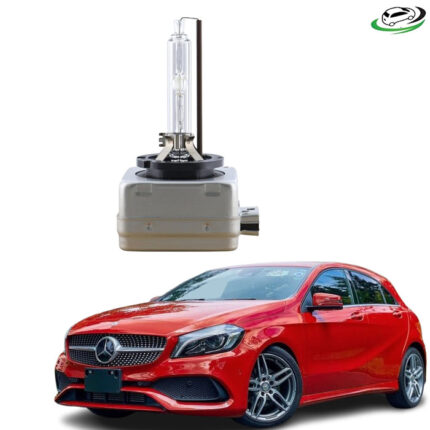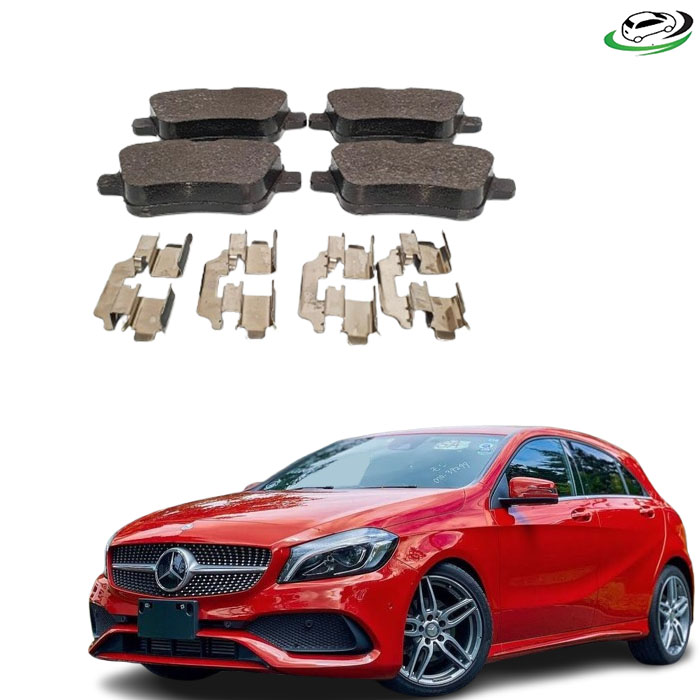-13%
Get Mercedes Benz A180 W176 Rear Brake Pad Set A0004200605 in Kenya
The brake system is one of the most vital safety features in any vehicle. Whether you’re driving through city streets or on highways, a properly functioning brake system ensures your safety and the safety of others on the road. Among the many components of the braking system, the brake pads play a crucial role in providing the necessary friction to stop the vehicle. While brake pads are often associated with the front of the car, rear brake pad sets are equally essential in maintaining optimal braking performance.
This guide provides an in-depth understanding of rear brake pad sets, including their functions, types, features, installation, maintenance, and benefits. Understanding how rear brake pads work and how to maintain them can help drivers make informed decisions about their vehicle’s brake system and improve their overall driving safety.
What Is a Rear Brake Pad Set?
A rear brake pad set is a pair or set of friction materials installed on the rear axle of a vehicle. These pads are part of the disc brake system, which is the most common braking system found in modern vehicles. The rear brake pads press against the brake disc (rotor) to create friction, slowing down or stopping the vehicle.
In most vehicles, the front brakes bear a greater share of the braking load, especially during emergency stops. However, the rear brakes are still essential for overall braking efficiency, stability, and balance. Rear brake pad sets are designed to handle the braking forces of the rear axle while providing smooth and consistent braking performance.
How Rear Brake Pads Work
The rear brake pads work by pressing against the brake rotors when the brake pedal is pressed. Here’s a breakdown of how they function:
- Application of Brake Pedal: When you press the brake pedal, hydraulic pressure is sent through the brake lines to activate the calipers.
- Friction Creation: The calipers, which are mounted on either side of the brake rotor, squeeze the brake pads against the rotor. This creates friction between the brake pads and the rotor.
- Stopping the Vehicle: The friction generated by the contact between the brake pads and rotor slows down the rotational motion of the wheels, ultimately bringing the vehicle to a stop.
- Heat Dissipation: As friction occurs, the brake pads and rotors heat up. Rear brake pads are designed to dissipate this heat effectively to prevent damage and maintain optimal braking performance.
The rear brake system works in conjunction with the front brake system to ensure a balanced and smooth stop. While the front brake pads take the brunt of the braking force, the rear brake pads provide essential support to ensure stability and reduce the risk of skidding.
Types of Rear Brake Pad Sets
There are several types of brake pads available, each designed to provide specific benefits for different driving conditions. The most common types of rear brake pads are:
1. Organic Brake Pads
Organic brake pads, also known as non-asbestos organic (NAO) pads, are made from materials like rubber, carbon, and resins. These pads are typically quieter than other types of brake pads, but they wear down more quickly. They are ideal for vehicles used in light driving conditions, such as city driving and daily commuting.
Advantages:
- Quiet operation
- Low dust production
- Soft feel and good initial bite
Disadvantages:
- Shorter lifespan
- Less effective in high-performance or heavy-duty driving
2. Semi-Metallic Brake Pads
Semi-metallic brake pads are made from a mix of metal particles, such as steel or copper, combined with organic materials. These pads provide a balance of performance, durability, and cost-effectiveness. Semi-metallic brake pads are a popular choice for many vehicles and offer consistent braking performance.
Advantages:
- Durability and long lifespan
- Good heat dissipation
- Strong braking power
Disadvantages:
- Noisier than organic pads
- Can create more dust
- May cause more wear on rotors
3. Ceramic Brake Pads
Ceramic brake pads are made from ceramic materials combined with small amounts of metal. These pads are designed to offer superior performance, low dust production, and long lifespan. Ceramic pads are known for their quiet operation and ability to handle high temperatures.
Advantages:
- Quiet operation
- Long lifespan
- Low dust and reduced brake fade
- Effective in high-performance driving
Disadvantages:
- Higher cost than organic and semi-metallic pads
- Can be less effective in extreme cold temperatures
4. Low-Metallic NAO Brake Pads
Low-metallic NAO brake pads are similar to organic pads, but they contain a small amount of metallic particles to improve heat dissipation and performance. These pads provide a good balance of comfort, performance, and cost.
Advantages:
- Better heat dissipation than organic pads
- Strong braking power
- Reduced brake fade
Disadvantages:
- Noisier than organic pads
- More wear on the rotor compared to fully organic pads
Why Rear Brake Pads Are Important
Although the front brakes are responsible for most of the braking force, the rear brakes still play a critical role in vehicle safety. Here’s why rear brake pads are so important:
1. Balance and Stability
The front brakes handle more braking force due to the weight distribution of most vehicles. However, if the rear brakes are not functioning correctly, it can cause instability and make the vehicle more prone to skidding or losing control, especially in slippery conditions. Properly functioning rear brake pads ensure that the vehicle maintains stability during braking.
2. Even Wear
Brake pads should wear evenly to maintain proper braking performance. Uneven wear on the brake pads can lead to poor braking efficiency, increased wear on other brake components (like rotors), and compromised safety. Regular inspection and maintenance of rear brake pads help ensure even wear across all four corners of the vehicle.
3. Smooth and Safe Stopping
Proper rear brake pad function contributes to a smooth and consistent stopping power. If the rear brake pads are worn out, it may lead to poor braking performance and increased stopping distances. This can be particularly dangerous during emergency braking situations.
4. Noise and Vibration Reduction
Worn-out brake pads can cause noise and vibrations, making the braking system unpleasant to use. When rear brake pads become thin or damaged, they may produce squealing, grinding, or pulsating noises. Replacing the brake pads with a new set helps restore smooth and quiet braking.
Signs Your Rear Brake Pads Need Replacement
It’s crucial to monitor the condition of your rear brake pads to ensure they are performing correctly. Here are some signs that indicate it might be time to replace your rear brake pads:
- Squeaking or Squealing Noises: If you hear high-pitched squealing sounds when applying the brakes, it may indicate that the brake pads have worn down and need replacement.
- Grinding Noise: A grinding sound is a serious sign that the brake pads have worn down completely, and the metal components of the brake system are rubbing against each other. Immediate replacement is necessary.
- Vibration or Pulsation: If you feel vibrations or pulsations when pressing the brake pedal, it may be due to uneven wear on the brake pads or warped rotors.
- Reduced Braking Performance: If the vehicle takes longer to stop or doesn’t stop as quickly as usual, the brake pads may be worn and need to be replaced.
- Thin Brake Pads: If the brake pads are less than 3 millimeters thick, they should be replaced soon to avoid compromising braking efficiency.
How to Replace Rear Brake Pads
Replacing rear brake pads is a task that can be done by a skilled DIYer with the right tools, or you can have it done by a professional mechanic. Here’s a general outline of the process:
- Lift the Vehicle: Use a jack to lift the vehicle and secure it with jack stands.
- Remove the Wheels: Take off the wheels to access the brake system.
- Remove the Old Brake Pads: Detach the caliper and remove the old brake pads. You may need to use a brake pad spreader tool to retract the piston.
- Install New Brake Pads: Install the new brake pads in the caliper bracket and reassemble the brake components.
- Reassemble and Test: Reattach the wheels, lower the vehicle, and test the new brake pads by driving at low speeds and applying the brakes.
Conclusion
Rear brake pad sets are a vital part of your vehicle’s braking system. While they don’t bear the entire weight of braking like the front pads, they provide crucial support in maintaining vehicle stability, safety, and performance. Choosing the right type of rear brake pads, staying on top of maintenance, and replacing them when necessary can enhance your driving experience and ensure you have the stopping power you need when it matters most. Proper care and timely replacement of rear brake pads help to extend the life of your brake system, prevent damage to other components, and ensure your safety on the road.
Follow us on Facebook for more parts.




Reviews
Clear filtersThere are no reviews yet.